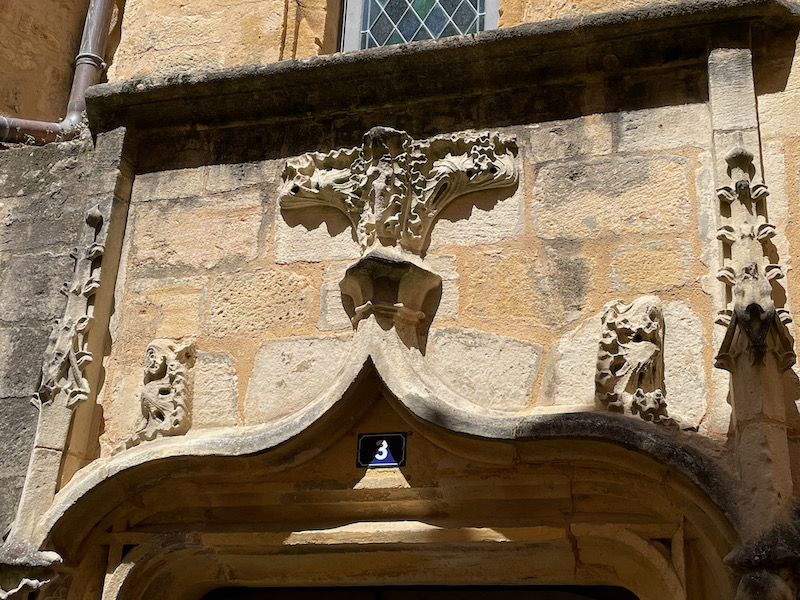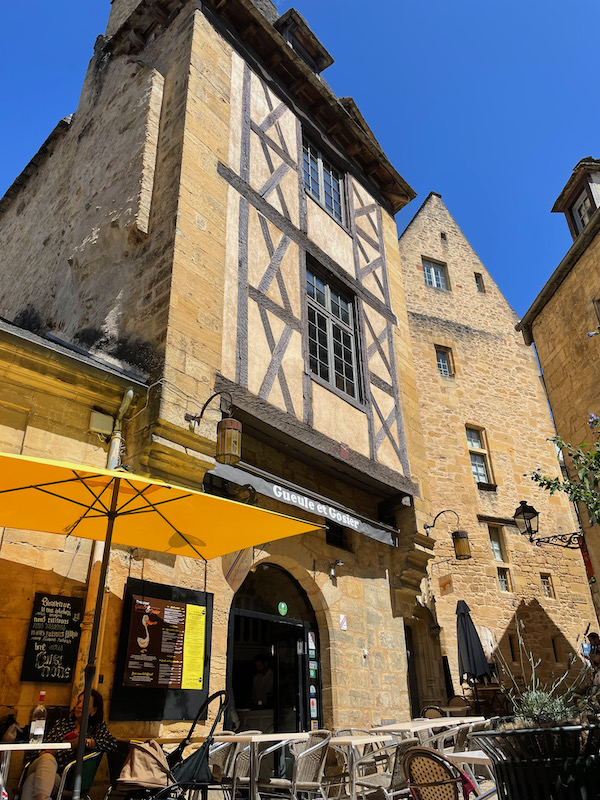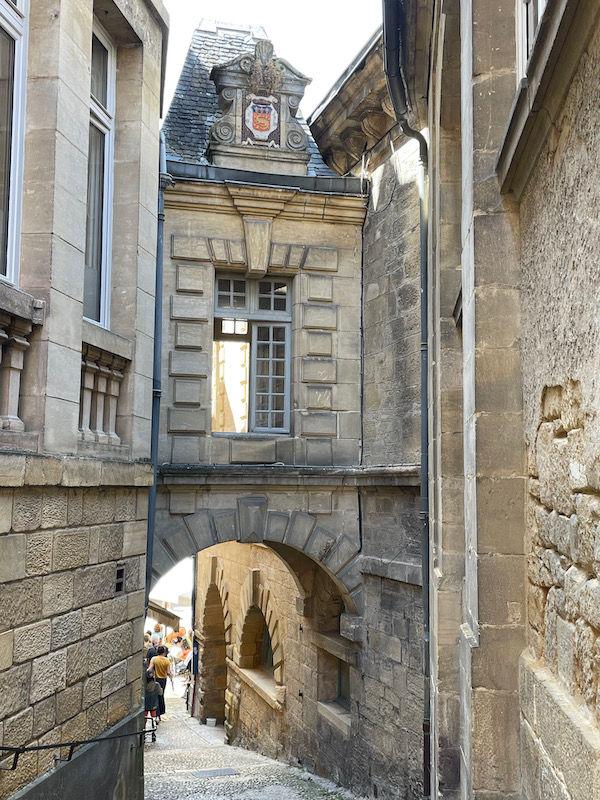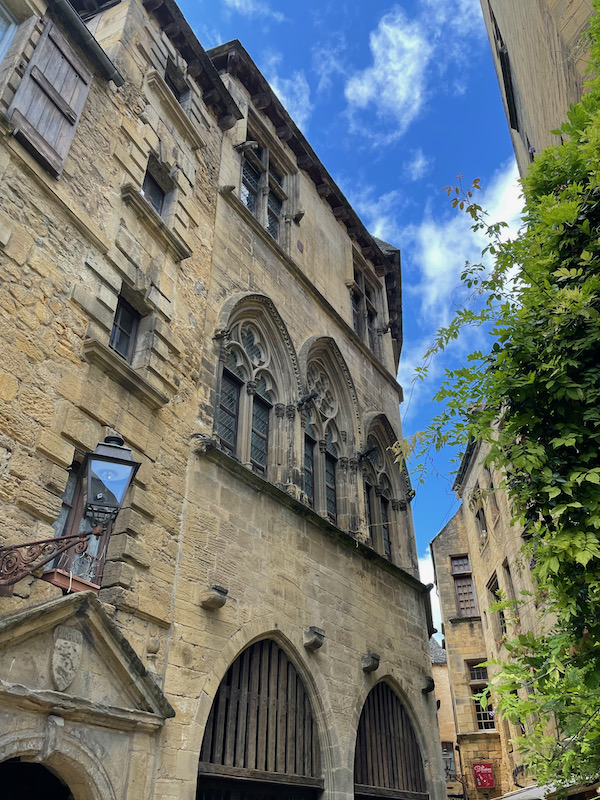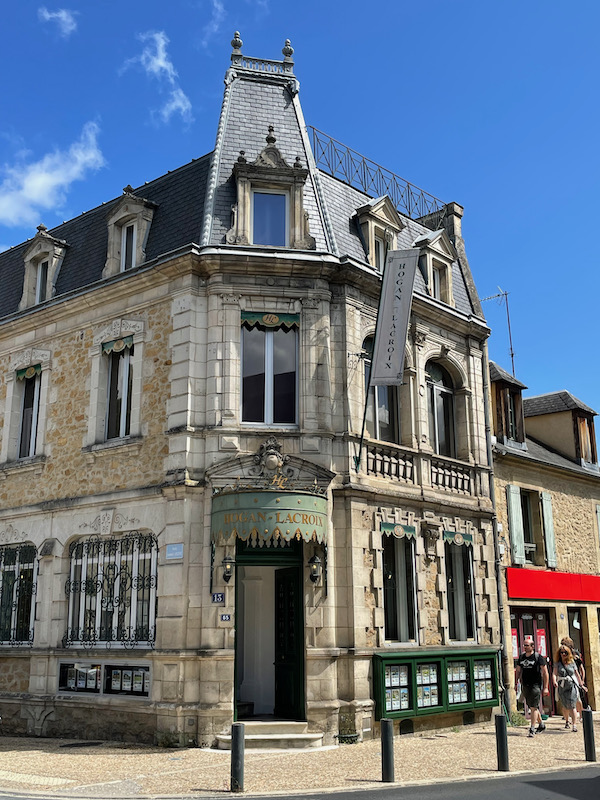Our Blog - Normandy 2023 - Sarlat-la-Canéda, France
Sarlat and La Canéda were distinct towns until merged in 1965. Sarlat is a medieval town that developed around a large Benedictine abbey and it was one of the few abbeys in the region that was not raided by the Vikings. The almost-entirely-pedestrian old town is very medieval still, with restored stone buildings and narrow alleyways. You'll see LOTS of people as the town was pretty packed and parking was at a premium!
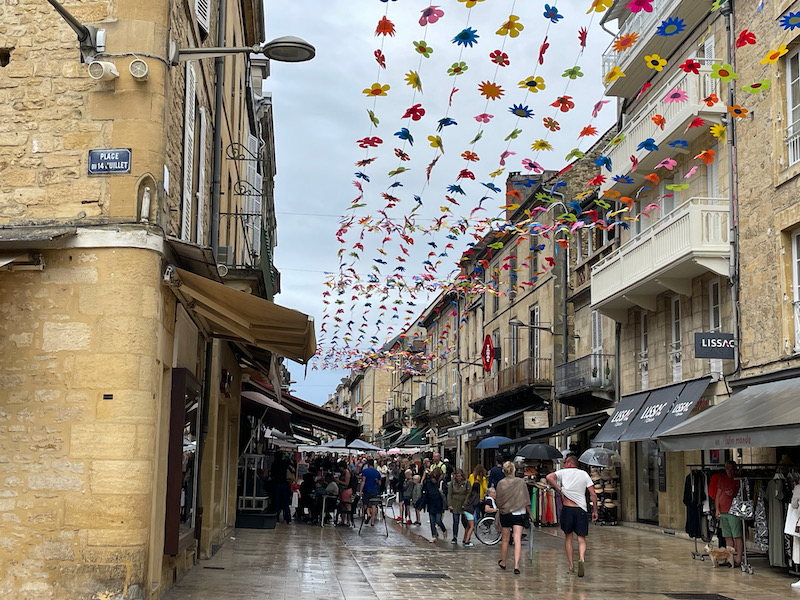
Cathedral de Saint-Sacerdos was started in the 12th century and the bell tower from that original church is still there. During a reconstruction in 1504, the nave and choir were destroyed in 1504 but only the choir was rebuilt at that time due to financial issues. Work resumed in 1682 and the Gothic vaults of the cathedral date from that time. You can see how the building next door, the Episcopal Palace, which is literally attached to the side (there are some close-up pictures just after this).
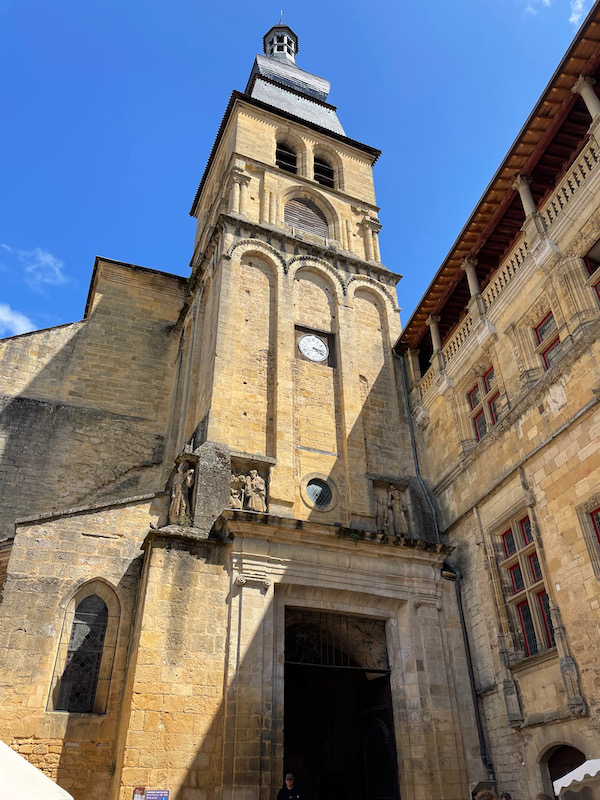
Moving inside, you can see the Gothic arches and ribbed vaults in the 17th-century nave. The side chapels were really nice, so I took a few extra pictures as I went around.
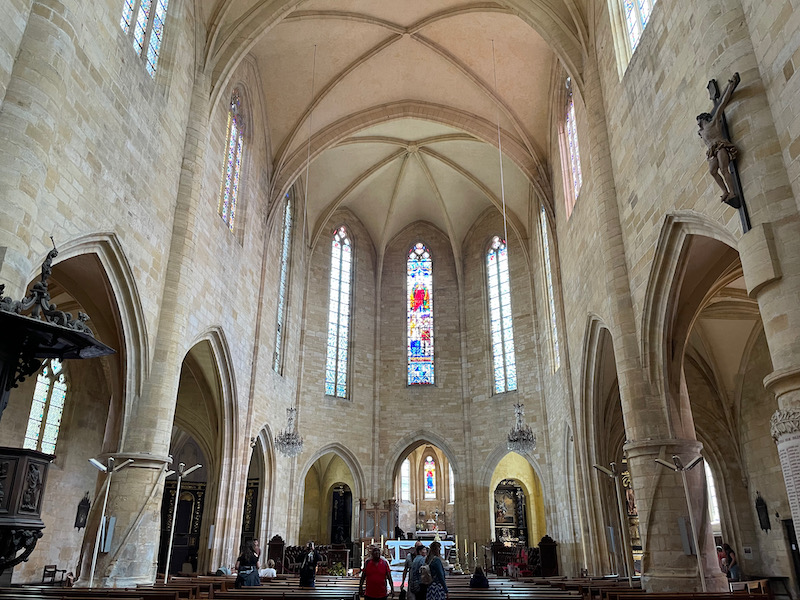
The first side chapel on the right-hand side has this wooden Baroque altar with a Pieta that dates back to 1648. After that is the chapel dedicated to Saint Sacerdos, for whom the Cathedral is named. The carved wood altarpiece is not as fancy as the Baroque altars with the gold, but I liked how the stained-glass windows threw color on the bottom.
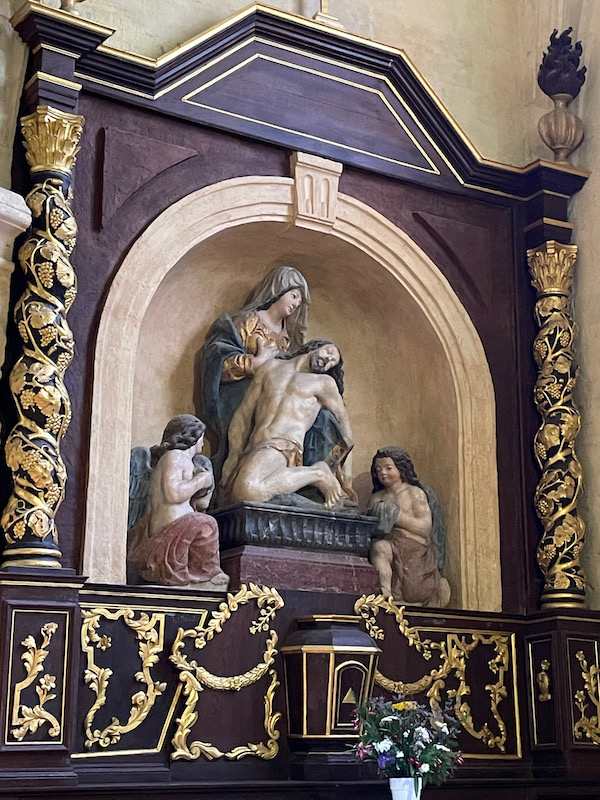
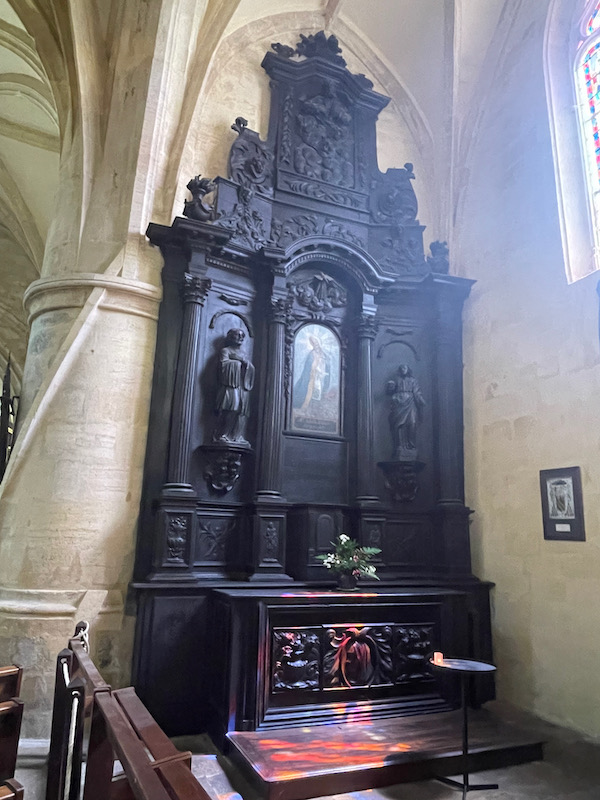
The Chapel of Saint Peter is the last side chapel on the right and it has another of the dark-wood-and-gold Baroque-style altarpieces. While it is dedicated to Saint Peter (the statue in the middle) it contains a 19th-century shrine with a wood and wax figure laying down, which represents Saint Martin of Brive who died a martyr in 407.
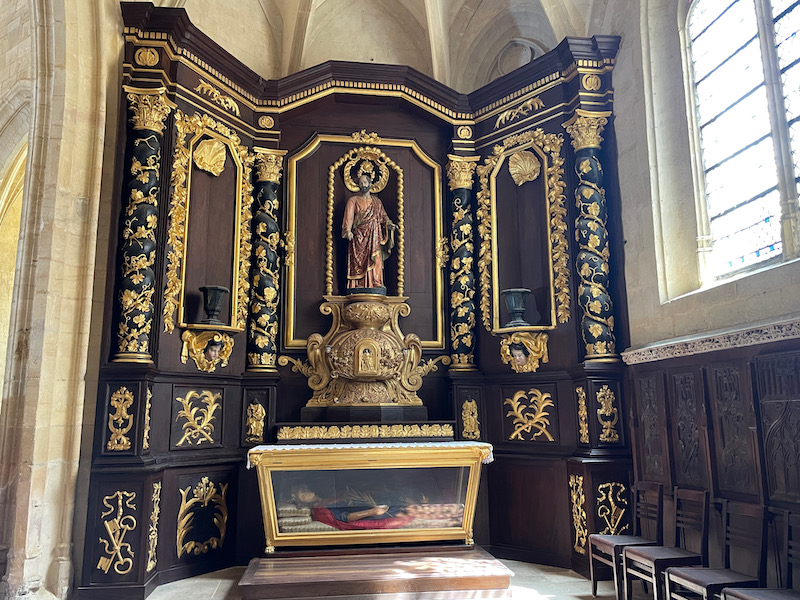
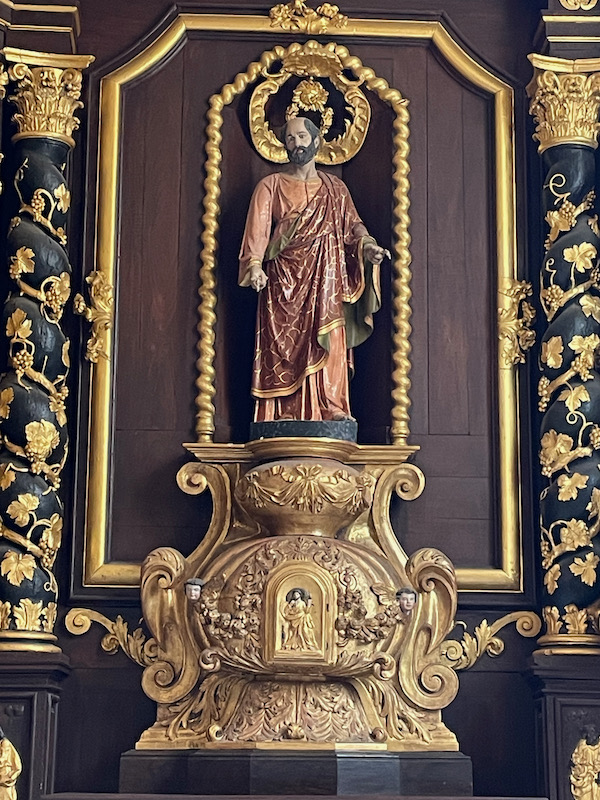
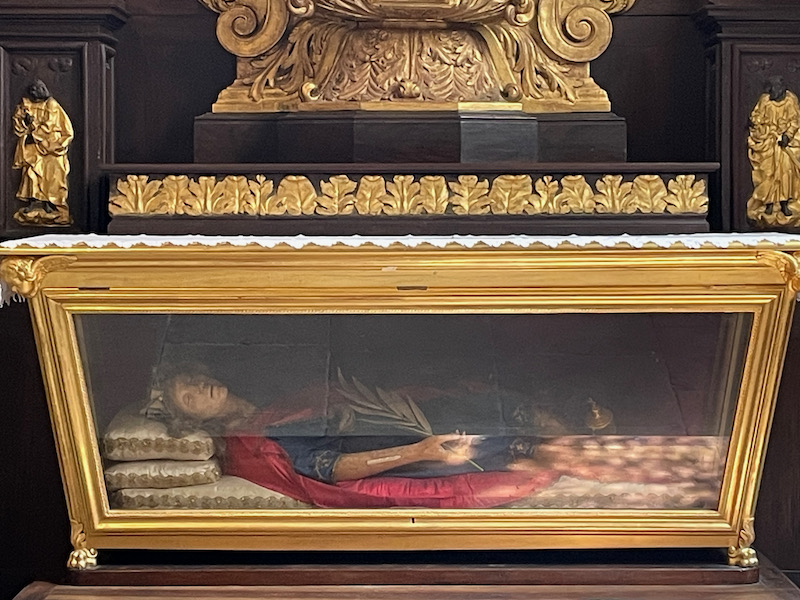
This is called the Guardian Angel chapel and in the middle of the altarpiece is a painting from 1863. At the bottom is a 17th century bas-relief showing Christ giving Holy Communion to his disciples.
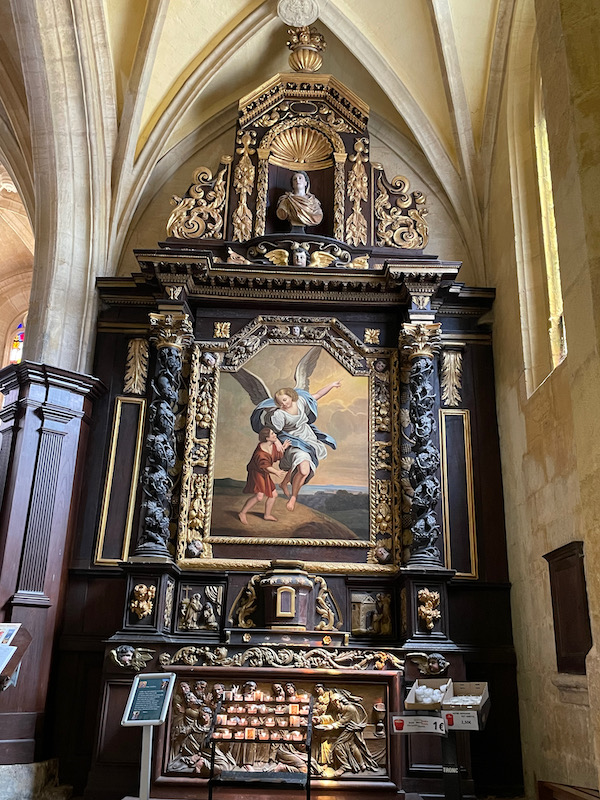
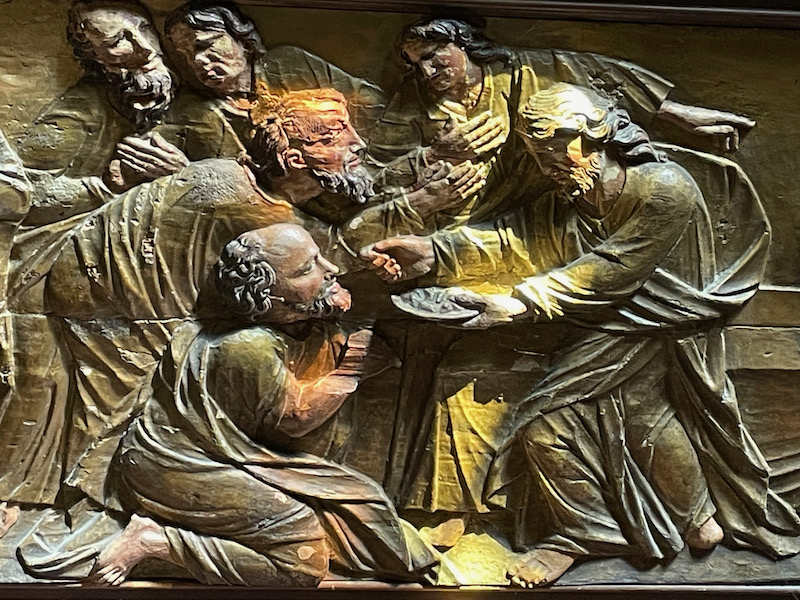
I'll finish with a couple of stained-glass windows.
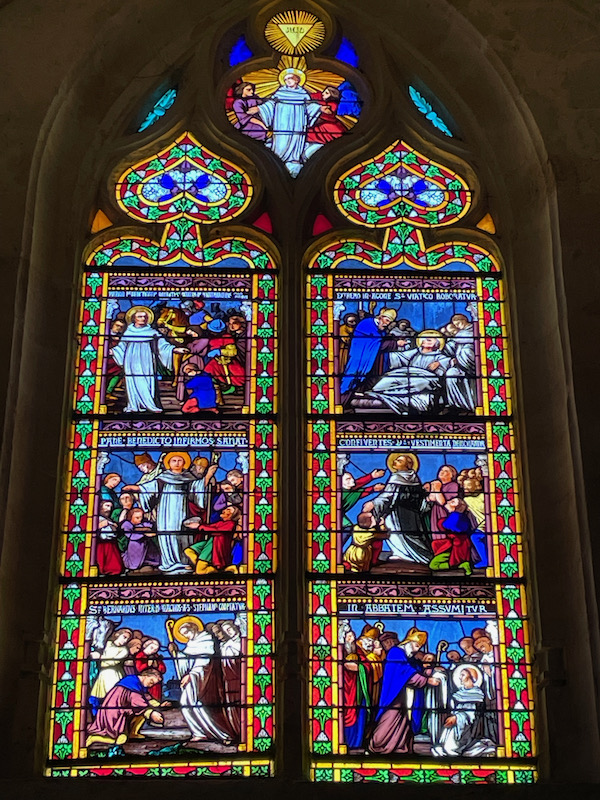
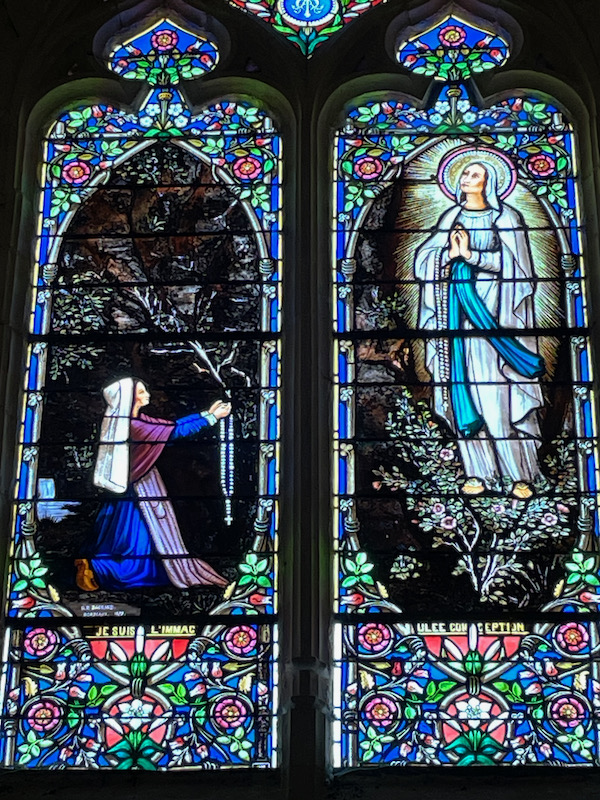
The organ dates back to the 18th century (1752) and was restored in 2005.
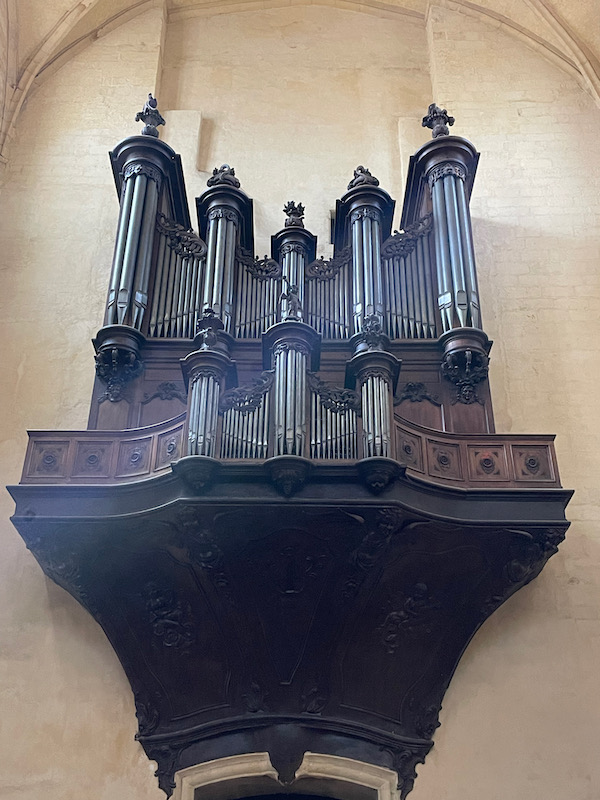
As we left, we headed around to get a view of the back of the church and the flying buttresses.
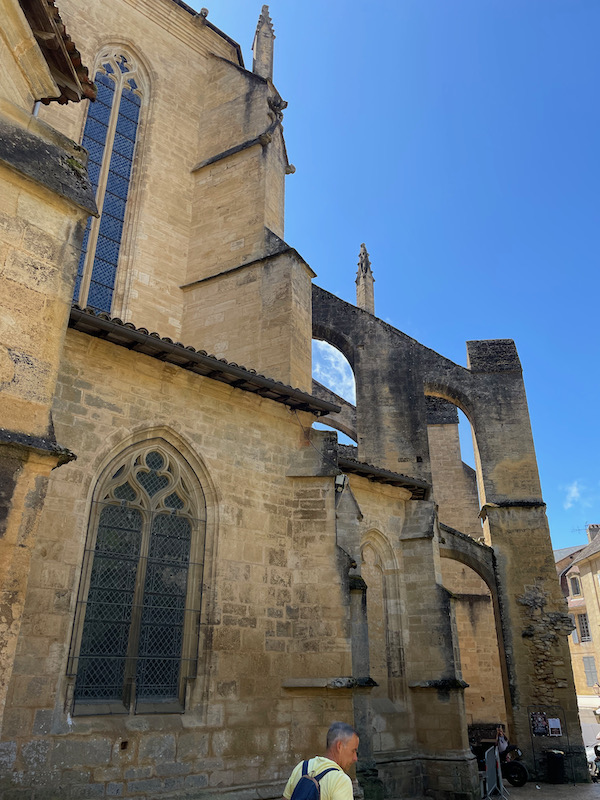
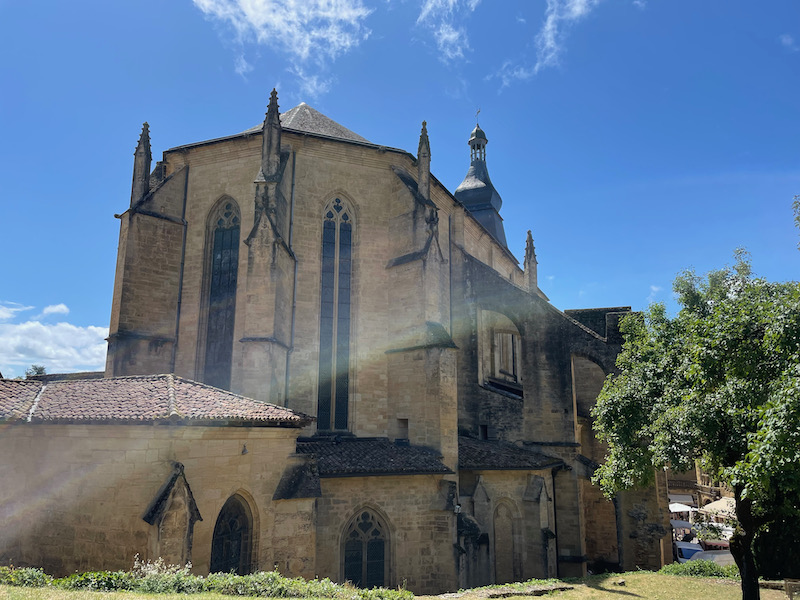
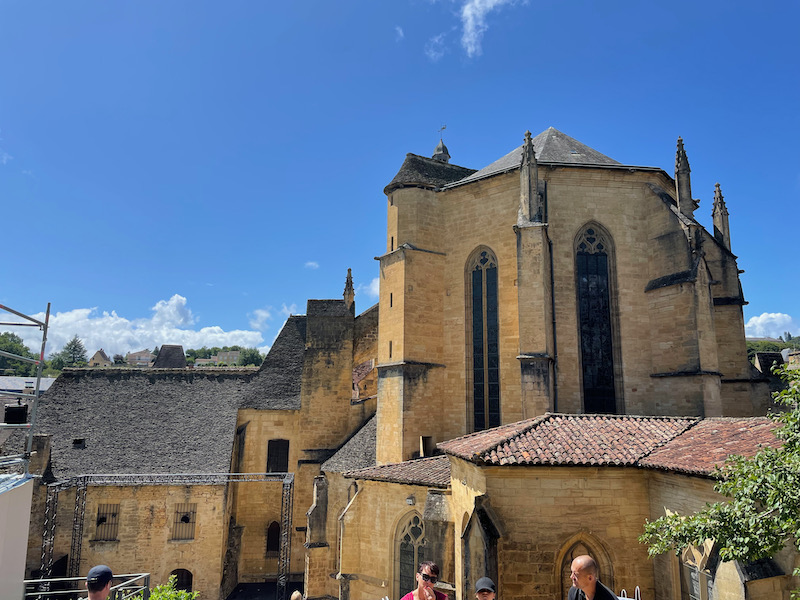
The main square next to the Cathedral was one of the most impressive for me, with some really nice buildings.
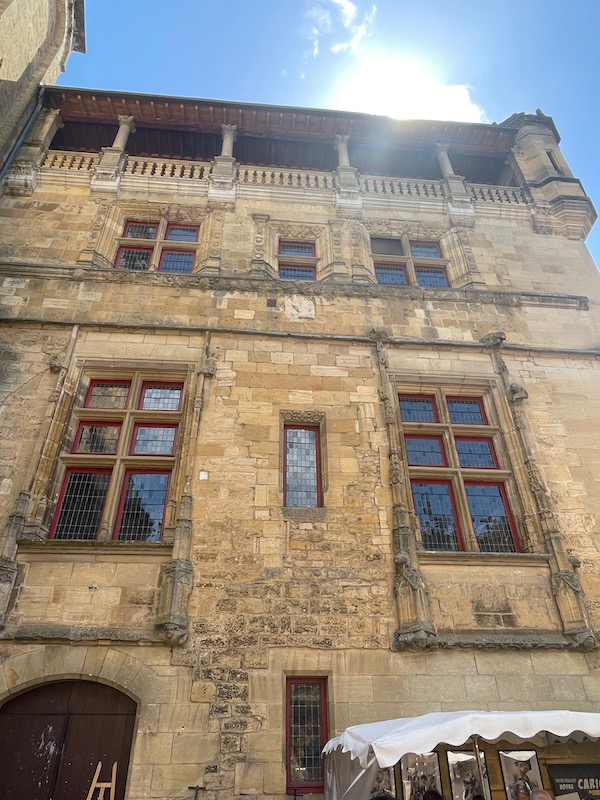
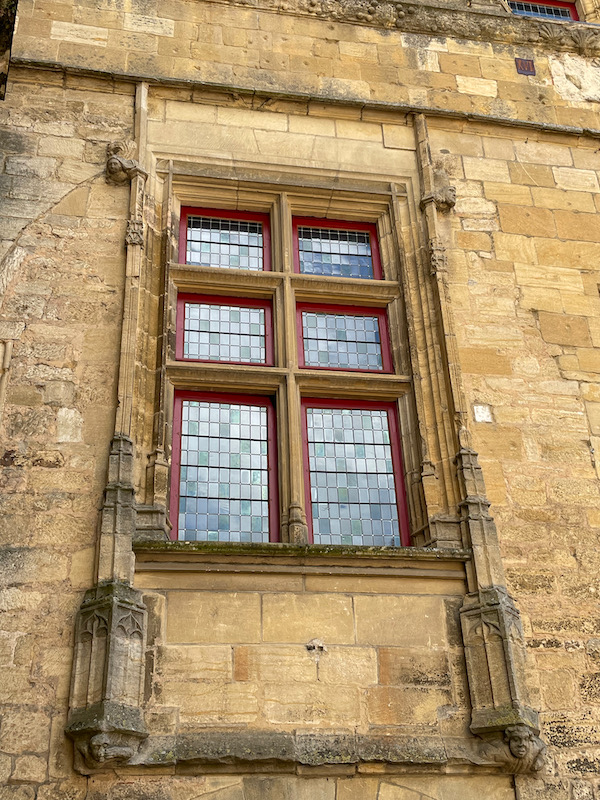
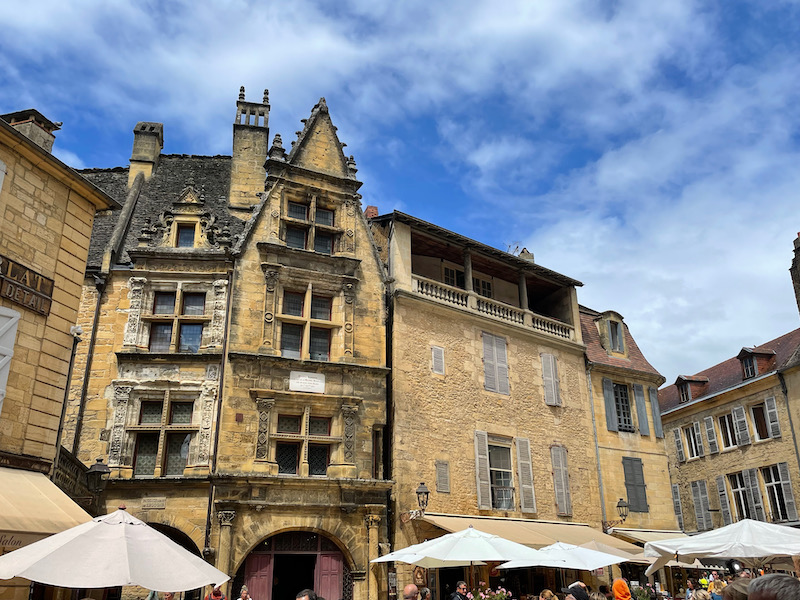
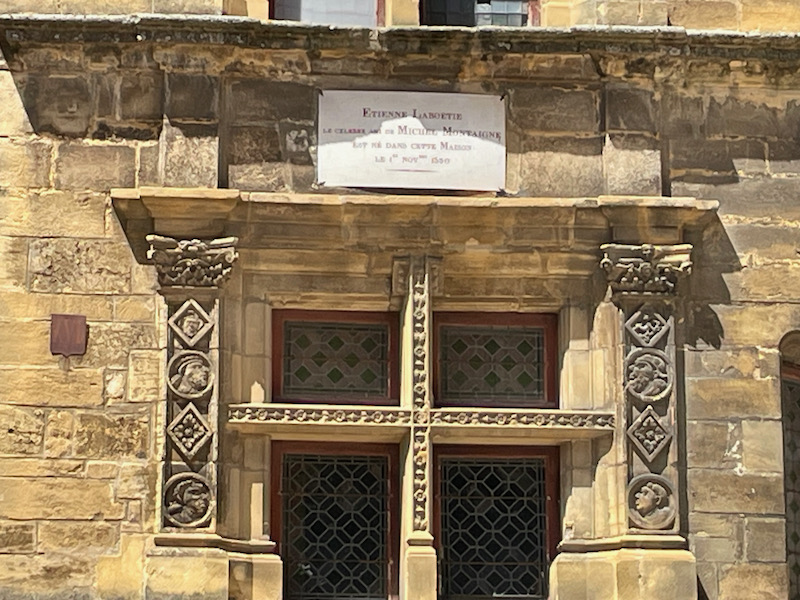
The Lanternes des Morts was probably built in the last 1/3 of the 12th century, around 1180, behind the apse of Saint-Sacerdos Cathedral. The lantern tower is thought to be an interpretation of the dome of the Holy Sepulcher in Jerusalem as it appeared in the 4th century: a circular tower, with a door on the first level giving access to the Tomb of Christ, and a second level topped with a baldachin with 12 columns.
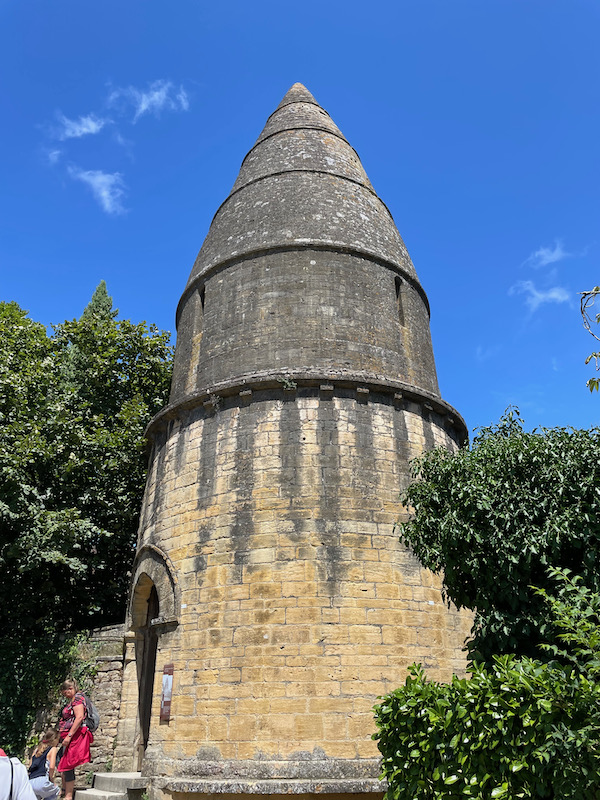
In the Middle Ages, Fontaine Saint-Marie was the source of drinking water for the town. When the plague hit the town in 1279, about 1/2 of the population died. The people made a procession to the Church of Saint-Marie (which no longer exists) and asked the Virgin for help. The plague left and niches were added to the fountain.
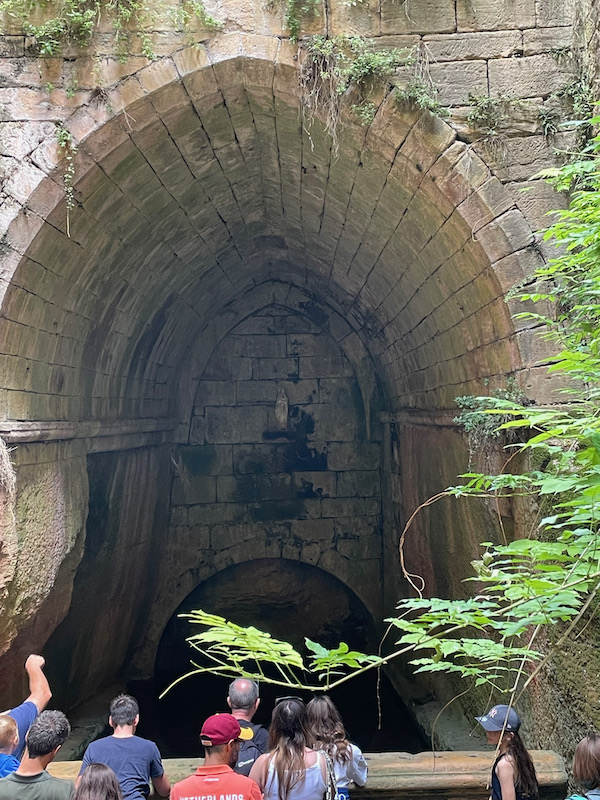
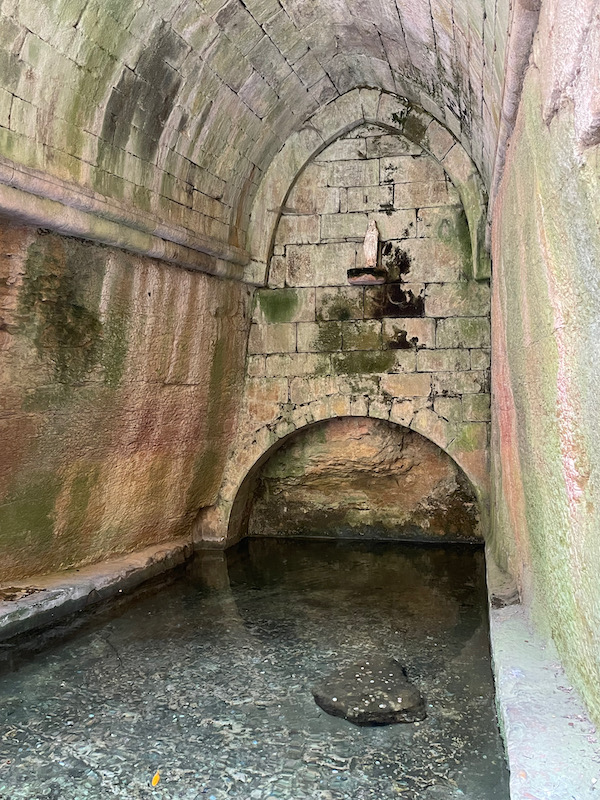
Originally called Tour Neuve, the 16th century Tour du Borreau is one of only two remaining towers from the rampart of the city (there used to be 18 of them). The name "Borreau" comes from the fact that during the 2 centuries following its construction, the executioner of the city (in French, a borreau) lived there.
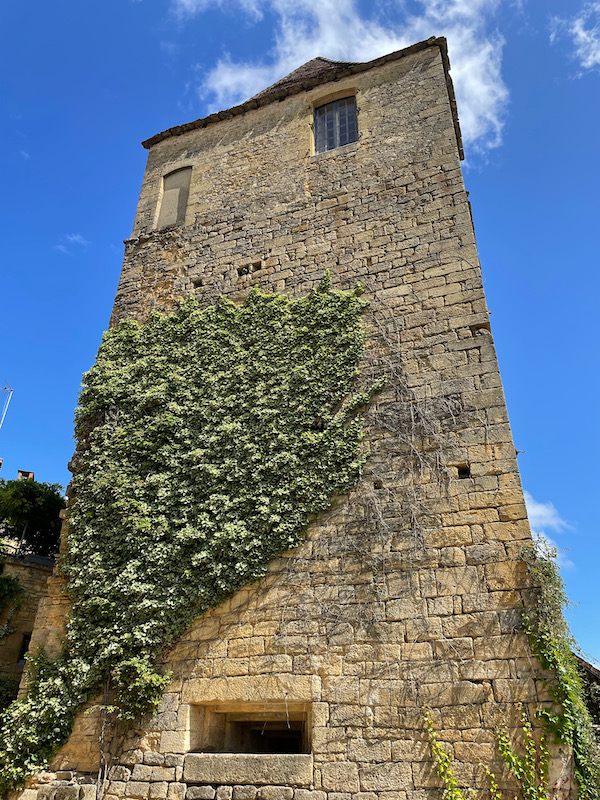
If you look closely in the distance, over the rooftops, you can see a glass cube. That is a panoramic viewing platform at the top of the bell tower of the old Sainte-Marie church. Since the entire old-town of Sarlat is listed as a historical monument, the elevator to the top had to be hidden, which they did quite nicely in the bell tower. The outer walls of the church are also still there and today houses a covered market.
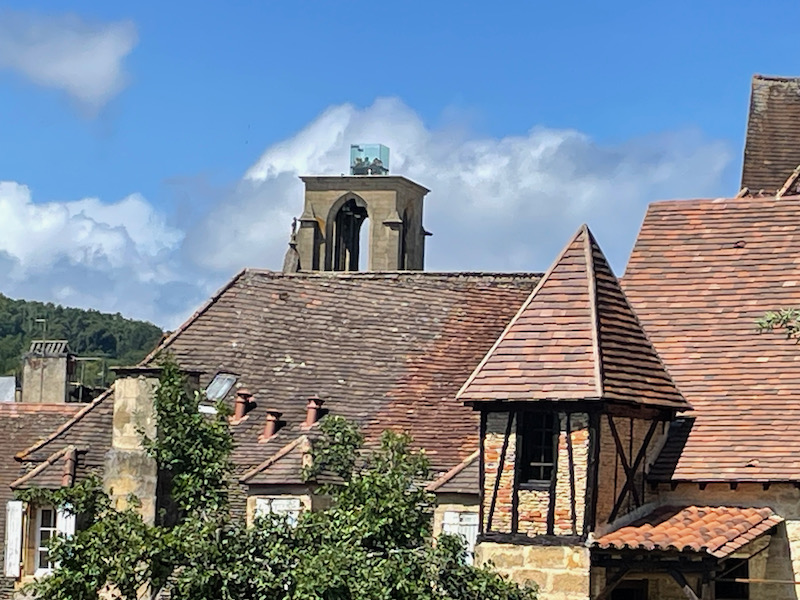
Random city pics, including some from the 14th and 15th centuries (like this first picture, showing the 15th century embellishment of doorway from the 13th century Hôtel de Grézel).
